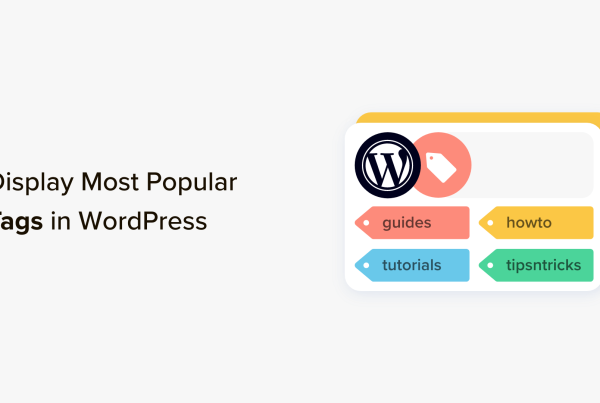Why do we develop accessible websites? And what does it even mean for a website to be accessible? The answers lay in a complicated 60-year history of disability activism and in 30-year-old legislation created before the web. It’s a story of U.C Berkeley wheelchair renegades who took sledgehammers to sidewalk curbs, a visionary architect who designed an illustrated guide to accessible building codes, and an ongoing attempt to define how the legislation that brought us wheelchair ramps applies to website design.
This is the first in a series I’m writing on accessible web experiences. In the articles to follow, we’ll look closer at the “how” of accessible design. But to begin, we’ll focus on the “why”.
The world’s first website went live on August 6, 1991, one year after passage of the Americans with Disabilities Act (ADA) and only 11 days after publication by the Department of Justice of the Title II and Title III regulations for government and private entities that are open to the public. So website accessibility is not explicitly addressed within the ADA.
However, a 2006 class action lawsuit against Target led to a federal court decision that the requirements of the ADA do indeed apply to websites. The DOJ has since generally held that the ADA applies to the websites of entities that serve the public, and the DOJ’s 2010 Standards for Accessible Design state, “Although the language of the ADA does not explicitly mention the Internet, the Department has taken the position that title II covers Internet Web site access.”
Title II applies to state and local government agencies. The DOJ’s statements have been somewhat murkier and inconsistent in reference to Title III, which applies to privately owned places of public accommodation, but most DOJ pronouncements have affirmed that the ADA does apply to these websites. The preponderance of civil court cases have upheld this as well.
So what does ADA compliance look like in a website? The DOJ’s original Standards for Accessible Design (PDF), published in 1991, provided detailed regulations for the maximum height of drinking fountain spouts (36 inches), the maximum force that can be required to open an interior self-closing door (5 lbf), and the maximum reach depth to ATM controls if the ATM can only be approached from a parallel pathway (10 inches). But the 1991 guidelines understandably said not a word about what was required of an accessible website.
This has led to much confusion. What distinguishes an accessible website from an inaccessible one?
In an attempt to bring clarity to the issue, the World Wide Web Consortium (W3C) established best practices for accessible design in its Web Content Accessibility Guidelines (WCAG), first published in 1999 and substantially revised in 2008. While it is a recommendation without the binding force of law, U.S. court rulings, beginning with Gil v. Winn-Dixie in 2017, have identified it as the “industry standard.”
In 2003, the DOJ published “Accessibility of State and Local Government Websites to People with Disabilities,” which established website accessibility standards for state and local governments, but rules for non-governmental entities remained in limbo.
Starting in 2010, the DOJ gave advance notice of a rule-making process that would have, at last, clearly codified the U.S. legal standards of website accessibility for non-government entities. That process went through years of delays until a 2017 executive order effectively halted the process again.
So an official U.S. codification of website accessibility compliance for non-government entities remains on indefinite hold, but the core principle remains unchanged and upheld in hundreds of court cases. Websites of companies and other organizations that serve the public must be accessible. And, in the absence of final rules from the DOJ, the WCAG is generally recognized as the industry standard for compliance.
But accessible design is about much more than avoiding litigation or complying with the ADA.
In the 1960s and early 1970s, a group of disabled activists and their allies at U.C Berkeley started what became a national movement to put curb cuts in sidewalks. These mini ramps that ease the transition from sidewalk to road and back again supported mobility independence for people in wheelchairs. But whether you’re in a wheelchair, pulling a roller bag, or pushing a shopping cart or stroller, curb cuts make all our travels easier.
More recently, in the 2000s and 2010s, web design shifted from static to responsive, and from desktop first to mobile first. Initially, developers adapted their “regular” (desktop) websites to be more accessible on mobile devices. But as smartphones began to dominate the market, mobile design became increasingly dominant.
Designing for mobile devices didn’t only make websites better for smartphones. All websites became less cluttered, cleared of excessive content, and easier to navigate. It turned out that a site built to be better for mobile devices was a better website for all.
There’s a recurring pattern to accessible design in both the built and virtual environments. First, accessibility is not even a consideration. Then the law makes it a compliance concern. Public and private entities rush to remediate the existing environment. Enterprising people come along with easier ways to retrofit accessibility. Then people begin designing and building for accessibility from the beginning, which is ultimately more cost effective. And as they do so, we discover that it benefits us all.
Today, this is leading us toward a new paradigm of website design.
First described by architect Ronald Mace, universal design is “the design and composition of an environment so that it can be accessed, understood and used to the greatest extent possible by all people regardless of their age, size, ability or disability.”
It’s an idea that started in the built environment. Mace’s first book was An Illustrated Handbook of the Handicapped Section of the North Carolina State Building Code, which sought to help architects understand the nation’s first building code for accessibility.
Today, we’re integrating his principles into web design.
The question is no longer: How do we adapt “regular” websites to work better for people with disabilities. Instead, we’re asking: How do we design and build websites that can be “accessed, understood and used to the greatest extent possible by all people”?
The question prompts us to think about extreme users, those whose needs create the greatest challenges to utilizing whatever the website offers. This thinking drives innovation, and that innovation benefits us all.
Consider predictive type for text messages and Google Search, automated subtitles in YouTube and Instagram, and voice assistants like Siri and Alexa. These all began as accessibility innovations designed for extreme users, innovations driven by compliance but now a boon for us all.
So why do we develop accessible web experiences?
To avoid lawsuits and comply with the ADA? That’s a beginning and important for the survival of any company, though not all that inspiring.
To grow our businesses by better serving what the CDC estimates are the 1 in 4 American adults who have a disability? That takes us beyond surviving to thriving.
To do what’s right for our fellow human beings with disabilities? That’s very important to me.
But I propose a bigger, bolder why. We should build accessible websites because it makes the modern web better for everyone. Companies, organizations, government entities, people with and without disabilities… everyone. Accessible websites are better websites, not only for some but for all.
This should drive us to go beyond the minimum standards of compliance. We should be reaching always to empower more people with all that the Internet has to offer. We should be building a better web that serves all people well. And that’s a vision that should inspire us to try harder every day.












